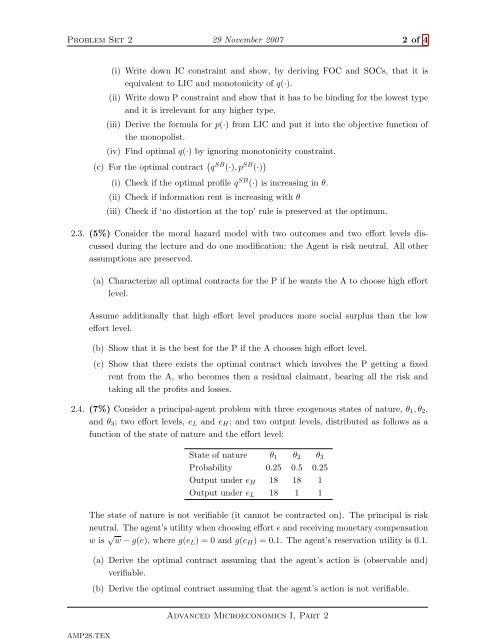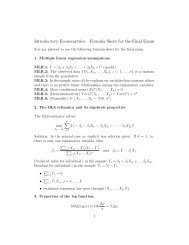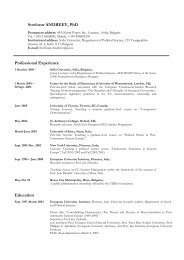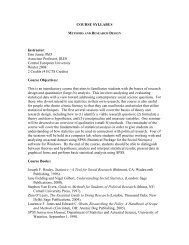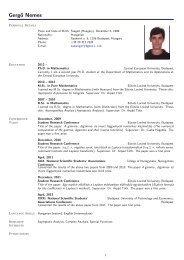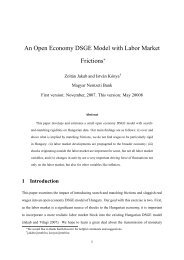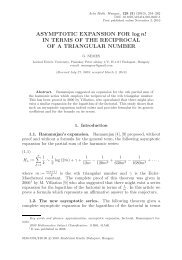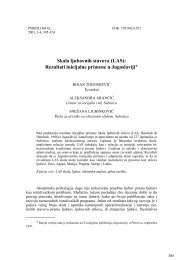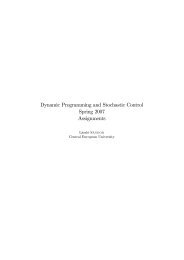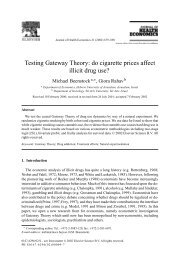Problem Set 2 - Personal pages of the CEU
Problem Set 2 - Personal pages of the CEU
Problem Set 2 - Personal pages of the CEU
Create successful ePaper yourself
Turn your PDF publications into a flip-book with our unique Google optimized e-Paper software.
AMP2S.TEX<br />
<strong>Problem</strong> <strong>Set</strong> 2 29 November 2007 2 <strong>of</strong> 4<br />
(i) Write down IC constraint and show, by deriving FOC and SOCs, that it is<br />
equivalent to LIC and monotonicity <strong>of</strong> q(·).<br />
(ii) Write down P constraint and show that it has to be binding for <strong>the</strong> lowest type<br />
and it is irrelevant for any higher type.<br />
(iii) Derive <strong>the</strong> formula for p(·) from LIC and put it into <strong>the</strong> objective function <strong>of</strong><br />
<strong>the</strong> monopolist.<br />
(iv) Find optimal q(·) by ignoring monotonicity constraint.<br />
(c) For <strong>the</strong> optimal contract ( q SB (·), p SB (·) )<br />
(i) Check if <strong>the</strong> optimal pr<strong>of</strong>ile q SB (·) is increasing in θ.<br />
(ii) Check if information rent is increasing with θ<br />
(iii) Check if ‘no distortion at <strong>the</strong> top’ rule is preserved at <strong>the</strong> optimum.<br />
2.3. (5%) Consider <strong>the</strong> moral hazard model with two outcomes and two effort levels discussed<br />
during <strong>the</strong> lecture and do one modification: <strong>the</strong> Agent is risk neutral. All o<strong>the</strong>r<br />
assumptions are preserved.<br />
(a) Characterize all optimal contracts for <strong>the</strong> P if he wants <strong>the</strong> A to choose high effort<br />
level.<br />
Assume additionally that high effort level produces more social surplus than <strong>the</strong> low<br />
effort level.<br />
(b) Show that it is <strong>the</strong> best for <strong>the</strong> P if <strong>the</strong> A chooses high effort level.<br />
(c) Show that <strong>the</strong>re exists <strong>the</strong> optimal contract which involves <strong>the</strong> P getting a fixed<br />
rent from <strong>the</strong> A, who becomes <strong>the</strong>n a residual claimant, bearing all <strong>the</strong> risk and<br />
taking all <strong>the</strong> pr<strong>of</strong>its and losses.<br />
2.4. (7%) Consider a principal-agent problem with three exogenous states <strong>of</strong> nature, θ 1 , θ 2 ,<br />
and θ 3 ; two effort levels, e L and e H ; and two output levels, distributed as follows as a<br />
function <strong>of</strong> <strong>the</strong> state <strong>of</strong> nature and <strong>the</strong> effort level:<br />
State <strong>of</strong> nature θ 1 θ 2 θ 3<br />
Probability 0.25 0.5 0.25<br />
Output under e H 18 18 1<br />
Output under e L 18 1 1<br />
The state <strong>of</strong> nature is not verifiable (it cannot be contracted on). The principal is risk<br />
neutral. The agent’s utility when choosing effort e and receiving monetary compensation<br />
w is √ w − g(e), where g(e L ) = 0 and g(e H ) = 0.1. The agent’s reservation utility is 0.1.<br />
(a) Derive <strong>the</strong> optimal contract assuming that <strong>the</strong> agent’s action is (observable and)<br />
verifiable.<br />
(b) Derive <strong>the</strong> optimal contract assuming that <strong>the</strong> agent’s action is not verifiable.<br />
Advanced Microeconomics I, Part 2


